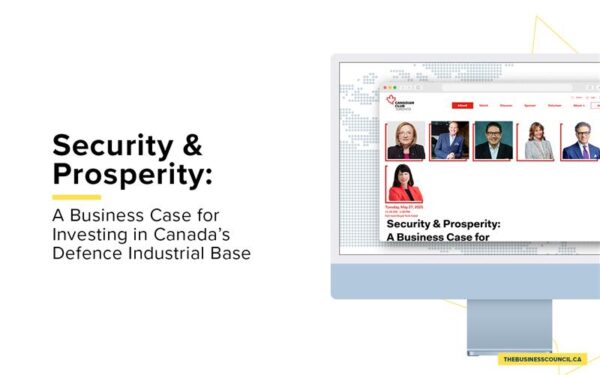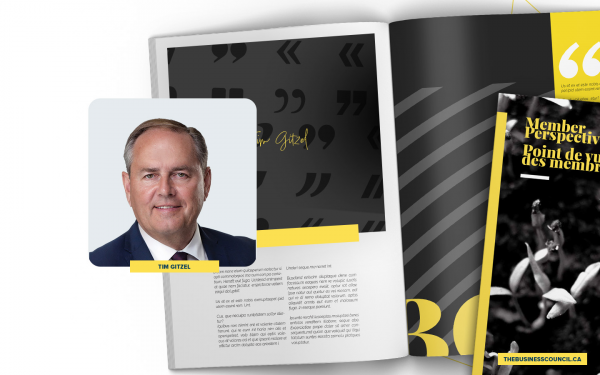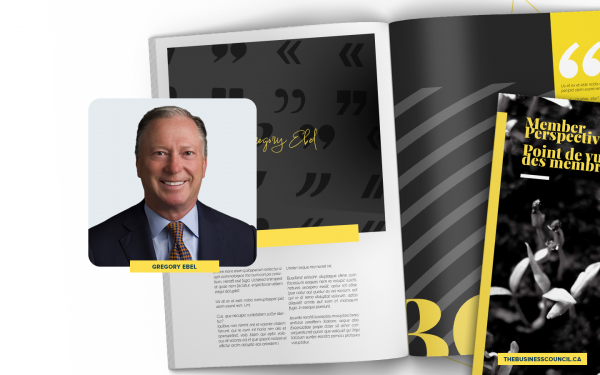We need a data-driven approach to fighting COVID-19
As published in the National Post.
Isaac Bogoch is an infectious diseases physician and scientist with the University of Toronto and Toronto General Hospital.
Goldy Hyder is President and CEO of the Business Council of Canada.
Canada has arrived at a critical moment in our national battle against COVID-19. Summer is over, many students are back in school, more and more employees are heading back to work. And in much of the country COVID-19 numbers are heading in the wrong direction.
Over the past month the number of infections has risen steadily in B.C., Alberta, Ontario and Quebec, likely the beginning of a second wave. While this was somewhat predictable as more people gather in indoor settings, it is clearly vital to ensure the cases do not get out of control.
Let’s be clear: Canada cannot afford a second lockdown. The emotional and financial impact of physical distancing measures have exacted a heavy toll. In May more than half of respondents to a Statistics Canada online questionnaire reported worsening mental health. Unicef Canada has warned of a “socioeconomic crisis” affecting children through physical-distancing control measures. Across the country many thousands of small businesses have closed permanently, while others are hanging on by a thread.
Since the beginning of the pandemic we have emphasized three Cs: a consistent approach to dealing with the virus, clarity around public health guidelines, and compliance with those rules to keep the virus in check. To those we can add one more C: context.
While case numbers and trends are important, contextualizing those numbers is equally important. Let’s put to work the local and global knowledge we have gained over the past eight months. Yes, individuals need to wear masks in indoor public places, maintain two-metre distancing wherever possible, and follow other local public health guidelines. But they also need much more information than they are currently receiving.
Public health agencies should be more transparent about where outbreaks are occurring in communities to help inform the general public. Do today’s numbers represent new outbreaks or existing ones? Is the source of infection known or unknown? How efficiently is contact-tracing taking place? Who is getting infected and where? What can we learn from these outbreaks?
Rather than lockdowns, it is not too late for data-driven and targeted public health responses to curb the rise in COVID-19 cases.
So how can we best contain the outbreaks we are seeing?
First, we need to focus on where the outbreaks are occurring and what is driving them, and we need high-quality data to so. Is it a long-term care home? A private party? An apartment building? A bar? Each of those examples requires a different public health response. By drilling down on the source of infection, public health officials can target outbreaks with appropriate interventions without shutting down entire communities.
Second, our battle against the virus has demonstrated the importance of robust testing and tracing. The sooner test results are available, the faster contact tracing can occur, and the faster outbreaks can be contained. We are still failing on this score. As Dr. David Naylor recently said in an interview, “We need to have our A-game here in testing and tracing.” That means significantly increased testing capacity (including early detections systems within at-risk groups), and faster results, with positive cases rapidly linked to effective contact tracing. And for those who may not have the resources to self isolate safely, safe havens to recover where people will not infect others.
Employers also have a role to play. As more people return to the workplace, businesses must create safe working environments for their employees and their clients. After all, the best economic stimulus is a healthy population.
We can avoid a second lockdown by adhering to public health recommendations and making use of high-quality data to improve our understanding of who is getting infected, when and where. Share information, learn from experience, pay close attention to the context — and stay vigilant.











